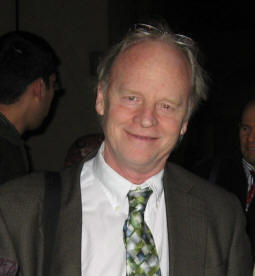|
 A
native of Melbourne Australia, Paul earned a BSc in Physics from
Monash University in 1974. In 1975 he started a PhD in Physics at
Nottingham University in one of the three original projects that
began MRI. In Raymond Andrew’s group, alongside that of Peter
Mansfield, they built the first MRI system producing
radiographic-quality images of the human wrist (Nature), and
performed the initial work on RF-field and power deposition in human
MRI. Upon completing his PhD, he went to Johns Hopkins University in
Baltimore in 1978 to adapt MRI for spatially localized spectroscopy–MRS,
using surface coils to demonstrate metabolite depletion and reversal
in regional myocardial ischemia (Science). A
native of Melbourne Australia, Paul earned a BSc in Physics from
Monash University in 1974. In 1975 he started a PhD in Physics at
Nottingham University in one of the three original projects that
began MRI. In Raymond Andrew’s group, alongside that of Peter
Mansfield, they built the first MRI system producing
radiographic-quality images of the human wrist (Nature), and
performed the initial work on RF-field and power deposition in human
MRI. Upon completing his PhD, he went to Johns Hopkins University in
Baltimore in 1978 to adapt MRI for spatially localized spectroscopy–MRS,
using surface coils to demonstrate metabolite depletion and reversal
in regional myocardial ischemia (Science).
In 1980 Paul joined the GE Research Center in Schenectady NY. They
ordered the biggest magnet available–a 1.5T system–and built the
first high-field whole-body MRI/MRS scanner, overcoming problems of
coil design, RF penetration and signal-to-noise. The results
translated into the highly-successful 1.5T MRI product-line of well
over 20,000 systems today. Paul did the first localized MRS in human
heart and brain. After starting a collaboration on heart
applications with Robert Weiss at Johns Hopkins, Paul returned to
the university in 1994, as Russell Morgan Professor and Director of
the MR Research Division. He has about 170 peer-reviewed papers with
most-cited reviews of tissue relaxation in Medical Physics, and
nearly 50 patents, including spin-echo MRI, ‘crusher’ gradients, and
PRESS. He is an ISMRM Fellow, 1989 Gold Medal recipient, and a GE
gold patent and Coolidge Fellowship awardee.
|